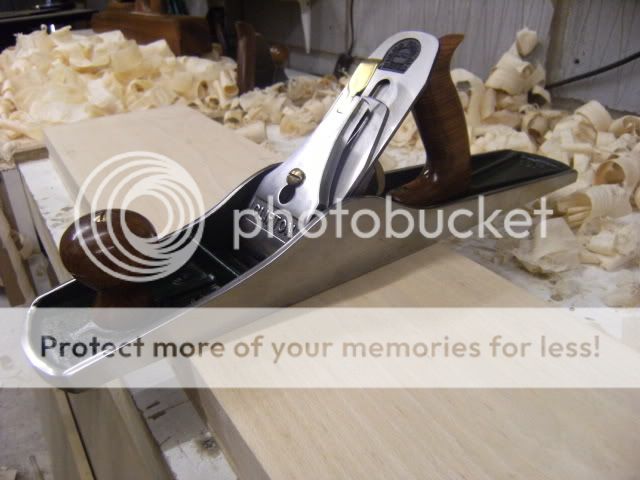Hi BB
I use the surface plate to check for any rocking of the plane's sole. The straight edge is used to measure the flatness at various points in the length - on this plane I checked the fit of the cigarett paper at 6 points along the length, then moved the straight edge along the width of the plane and checked again, thereby taking, say, 24 "measurements".
Having said that, if only I got off my ar$e and got a set of feeler gauges, then I wouldn't need to bother with the straight edge test.
The straight edge is from Veritas, and has a stated tolerance of .001" over its 24" length. From memory the certificate which came with the plate showed that it had better tolerances, as you say.
Cheers
Karl
I use the surface plate to check for any rocking of the plane's sole. The straight edge is used to measure the flatness at various points in the length - on this plane I checked the fit of the cigarett paper at 6 points along the length, then moved the straight edge along the width of the plane and checked again, thereby taking, say, 24 "measurements".
Having said that, if only I got off my ar$e and got a set of feeler gauges, then I wouldn't need to bother with the straight edge test.
The straight edge is from Veritas, and has a stated tolerance of .001" over its 24" length. From memory the certificate which came with the plate showed that it had better tolerances, as you say.
Cheers
Karl


































